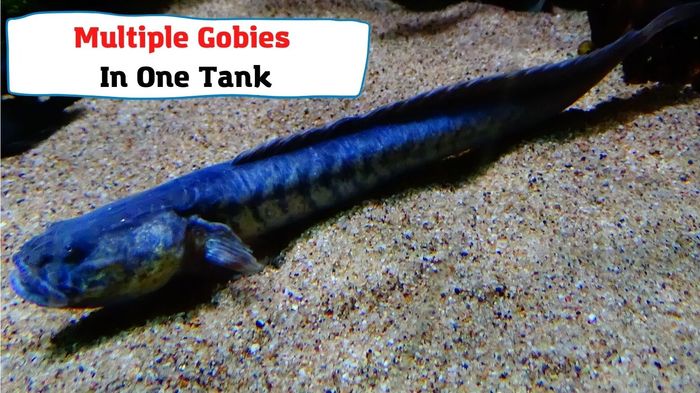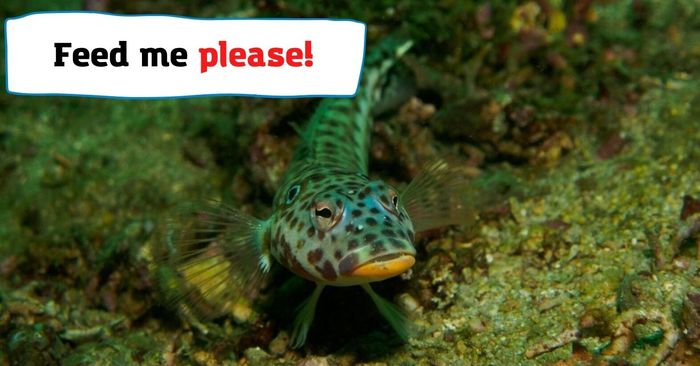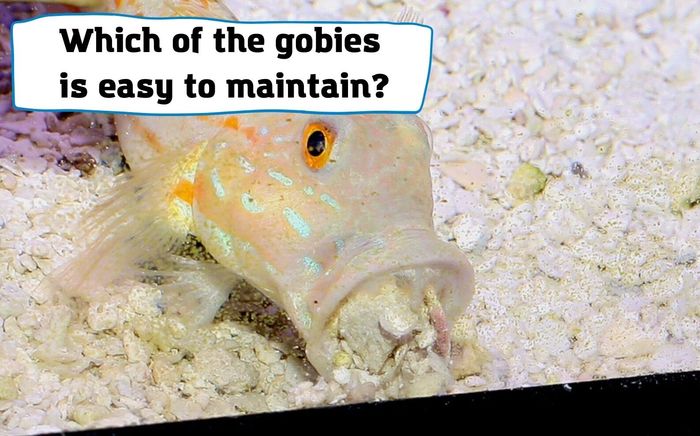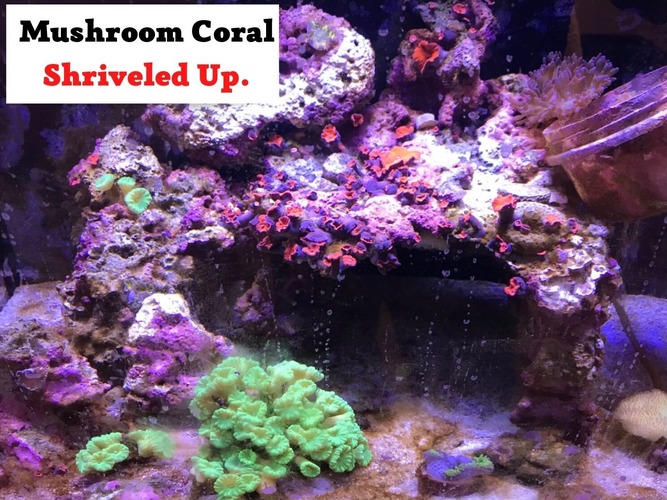
If you love fish and have just moved from a fish tank to a gobies tank, you will have many questions in mind. Definitely, we all have heard a lot about gobies, but knowing them from a distance is a different thing; having them as your pet requires a lot of research, and you will definitely care to get things right.
Within this context, one of the prominent questions taking a toll on you could be about the number of gobies you can put in a particular aquarium. Keeping only one goby in your tank is often out of the question for pet owners. However, you cannot go too harsh on this little creature and understand its nature if you really want to keep them. Once you learn to keep them nicely, you’ll see that irrespective of their sizes, the gobies bring a great personality of your own that can enliven your aquarium to a considerable degree.
So, this article primarily discusses the following topics:
- Gobies as pets
- Where can you keep gobies?
- Not all gobies like to live together
- Aquarium size
- How to feed your goby?
- Symbiotic relationship
- Which of the gobies is easy to maintain?
- Breeding
Gobies as pets
Gobies exist in almost all water forms irrespective of their size and territorial locations. So, you can definitely keep them in your aquarium, and they will make a nice pet (if you understand them well and provide for all their needs in the best possible way).
There are different species of gobies available, so the mixture of fish and other creatures you already have in your tank and the type of goby you want to add further is a specific tank-based question. In this article, we can keep things general to deduce what you think is the most appropriate for your aquarium and the health of living creatures already in your closed ecosystem.
Where can you keep gobies?
This shouldn’t be done if you have a limited tank and want to place your gobies with the aggressive fish species. It is because of the small size of the gobies. It makes the little creature prone to harassment.
So, if you place such creatures together, you will be spending most of your timer resolving issues between different animals of your tank.
In the worst situation, the predators of your aquarium can also treat them as snacks, and we are sure you cannot be around each time to save your gobies from all such problems.
So, the best aquarium for these little creatures is the reef aquarium. These are the subtle aquariums, and your gobies can live happily there.
Aquarium size
To keep gobies in the aquarium, you must have a fish tank of 25 gallons as the bare minimum. But this space will not always be enough considering the other animals in the aquarium. So, you should have a 50-gallon fish tank.
Or it is advisable to provide your gobies with enough space to swim, so the length of the tank matters too. Keeping it at least 4 feet wide would be ideal for housing a few gobies together.
Not all gobies like to live together
Did you know that the beautiful little goby do not tolerate conspecifics or even heterospecifics? This is a behavioral issue related to the occupation of the territory. It is possible to have limited space available, and the other gobies are identical. So, if you had been placing to include one goby of each genus in the reef tank, too, they’ll fight with each other and create problems for you.
How to feed your goby?

If you have decided to keep a specific goby species in your tank or provide them with an aquarium large enough to sustain multiple varieties, then the next question would be regarding their food. Will your goby be finding their food from the ecosystem, or will you provide them the daily food as you do for the other pets in your aquarium?
Gobies can be self-sufficient when it comes to their food. They can find the natural plankton populations from the tank to feed on. You can provide fresh frozen fish food from time to time, but you don’t have to worry about it all the time as your gobies can find their food on their own too.
However, you must not stop giving the supplementary food from time to time as without the readily available source of food supply, your goby can go incredibly thin, which is definitely not what you want.
How to medicate gobies?
This section shouldn’t be the concern of many of you, as gobies are highly resilient when adjusting to the new environment. They have a natural mechanism that helps them fight parasites and pathogens. The thick mucus coat does not let any intruders get into the body. However, if they get ill or develop a problem, you might think of providing the medication.
But while deciding upon it, do not forget that the medication will react considerably on this tiny fish because of their scale-less skin.
Even for newly acquired gobies, no medicated treatment is advised. Instead, maintaining the optimal water quality and ensuring excessive food for the fish is the ideal treatment you can give in this case. In extreme cases, if the medication is necessary, then you must only stick to the minimum dose of the medicine and avoid overdosing in any case.
The fish’s skin has no barriers, and the goby will likely take in all the medicine you will pour in the aquarium. So, if you have used an excessive quantity, it will absorb all of it that can harm the overall fish health.
Which of the gobies is easy to maintain?

After knowing all these facts, you might want to know about the particular species that is easier to maintain in your aquarium? If this is what you are looking for, our recommendation is here.
Sleeper gobies (Valenciennea) are our favorite and probably the easiest goby species to maintain. They ingest sand, and this is why also named sifters. While ingesting, they extract the tiny invertebrates found in the sand. As the sand bed is what you have in your aquarium, it can become their optimal food source, and the gobies ultimately help maintain it, providing benefits to your aquarium.
Their easy maintenance does not mean that you wouldn’t have to take any precautionary measures. These gobies can topple the live rocks, so make sure that your aquarium rocks are in place properly if you want to let a goby live into your aquarium.
Placing your gobies away from corals can also be one of the things to consider. Besides, the gobies are capable of pouring a mouthful of sand over the corals and the other invertebrates of your tank. So, you cannot neglect your aquarium for longer times. However, there are multiple other varieties of gobies available that you might want to keep in your tank.
Our advice here would be to read about each species’ characteristics and behaviors before making a decision and do not consider the small size of the beauty of this species to govern the decision.
Symbiotic relationship
If you have been looking for creatures with which your goby can live happily, there is no better choice than a shrimp. With shrimp, gobies can create a symbiotic relationship in which both species benefit each other in one way or the other.
Breeding
As mentioned earlier, gobies can be aggressive towards conspecifics, so the breeding of gobies does not depend much on your choice. However, if you have added a pair of gobies in your aquarium for this purpose, then the important thing here is that the goby can change their sex as a reversible process.
So breeding wouldn’t be a problem, but the tiny larvae have to be dealt with care and properly fed. But breeding goby can be another subject altogether; you will not want your entire aquarium to be filled with gobies. No matter how big your aquarium is, it is still limited, and you have other aquatic animals and plants in it.
Summing up
Gobies are a beautiful small species that are definitely loved for their size and beautiful skin. However, their behavioral characteristics are very different from the other fish or aquatic beings, thus requiring you to go for a complete analysis before buying one for your aquarium.
Besides, their small size makes them prone to harassment as well. Even these little creatures can be a problem for the corals and other invertebrates living in your aquarium already. These are just the general characteristics that we can associate with gobies broadly; each specific genus has its positives and negatives, and believe us, there are many of them, requiring you to have an in-depth analysis before you select a particular species for your aquarium.
- Pleco Not Eating. Main Reasons Your Pleco Is Starving - February 21, 2022
- Foxface Fish Sting: Any Danger? And What To Do To Relieve Pain? - February 20, 2022
- White Stuff Coming Out Of Snail – Dangerous? Should You Worry About It? - February 19, 2022




